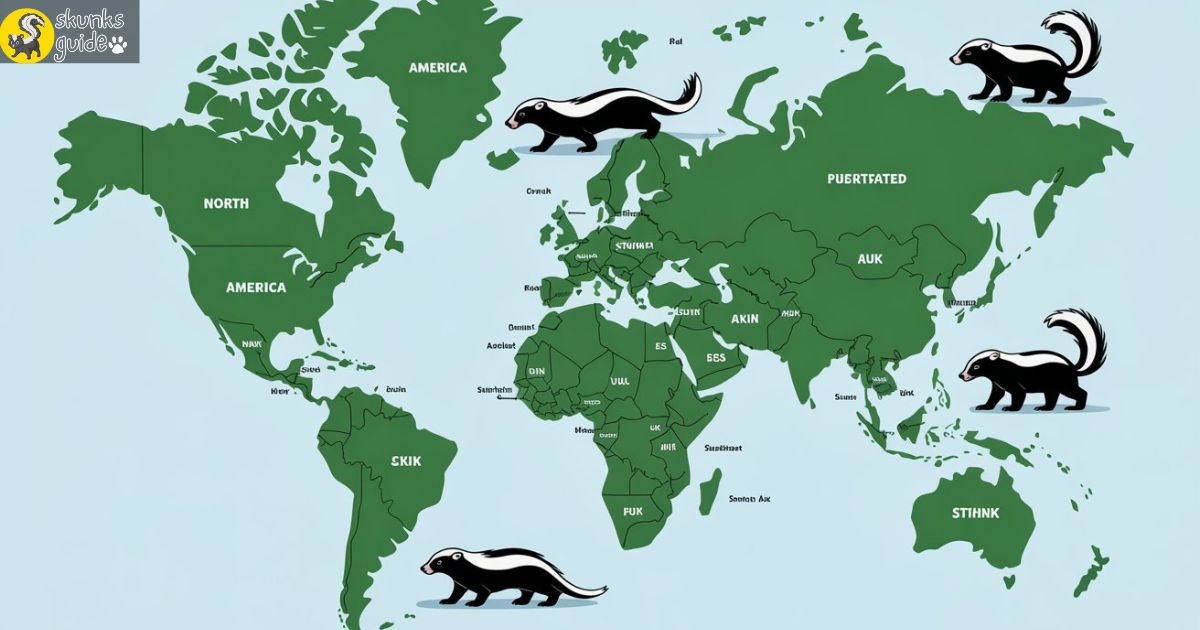Are There Skunks in Europe, Asia, Africa, or the UK?
As someone who’s spent years observing and researching wildlife across continents, I often get asked a simple yet surprising question: “Are there skunks outside of North America?” The short answer is—true skunks (Mephitidae family) are native only to the Americas, and you won’t find wild skunks in Europe, Asia, Africa, or the UK. However, some look-alike species do exist in other parts of the world, which leads to confusion.
In this article, we’ll explore where skunks naturally live, whether they’ve migrated beyond their native regions, and how European or Asian “skunks” compare to the familiar striped skunks of the U.S. and Canada. We’ll also clear up common myths about skunk sightings abroad.
Where Do Skunks Actually Live?
Skunks are mammals in the family Mephitidae, known for their strong-smelling spray used as a defense. There are around 12 species of skunks, all originally from the Americas, ranging from Canada to Argentina.
Native Range:
- North America: U.S., Canada, Mexico
- Central America: Belize, Honduras, Nicaragua, etc.
- South America: As far south as northern Argentina
Outside these areas, there are no naturally occurring skunks—though some animals may look or behave similarly.
Are There Skunks in Europe?
No, skunks are not native to Europe. You won’t find any wild skunks roaming forests in France, Germany, or Italy. However, skunks are sometimes kept as exotic pets in parts of Europe, especially the UK and Germany.
In Europe, the closest comparison is the European polecat, a member of the weasel family (Mustelidae), not related to true skunks.
Why the Confusion?
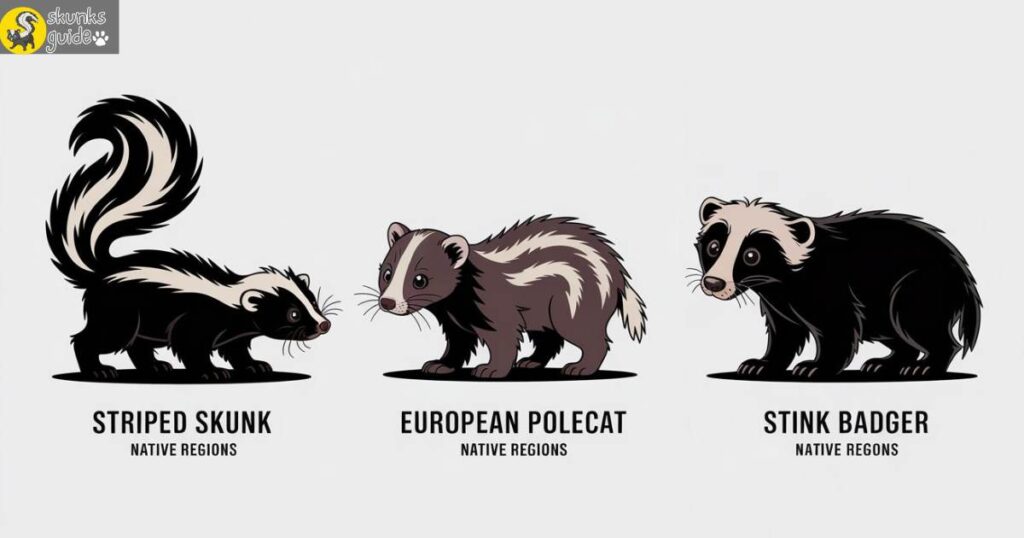
- The polecat gives off a musky odor when threatened, similar to a skunk.
- Their coloring can resemble a skunk from a distance (especially black-and-white fur).
- “Polecat” is sometimes used in rural slang for skunks in translated works, adding to the confusion.
Are There Skunks in the UK?
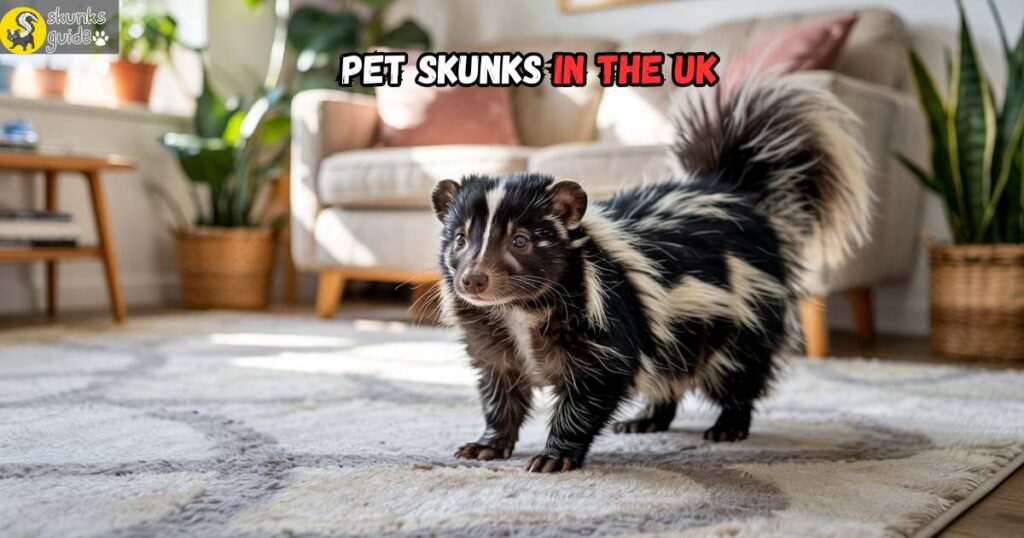
Just like the rest of Europe, the UK does not have any native skunk species. However:
- Domesticated skunks are legal in parts of the UK, though highly regulated.
- Escaped or released pet skunks may occasionally be spotted in the wild, but they are not established.
If you’ve ever heard someone in the UK say they “saw a skunk,” it’s most likely an escaped pet or misidentified badger.
Are There Skunks in Asia?
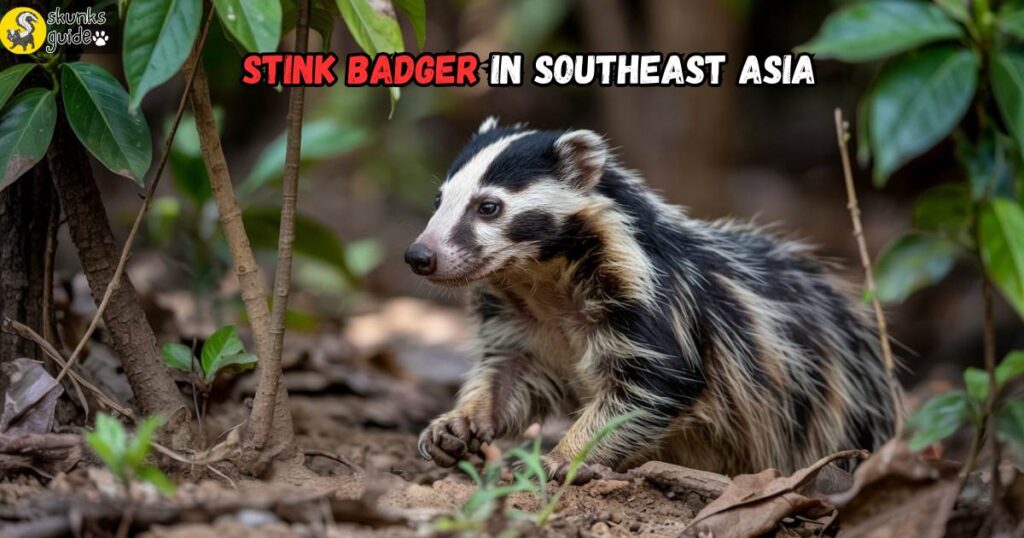
There are no true skunks in Asia, but there is one fascinating exception:
Meet the Stink Badger (Mydaus spp.)
Stink badgers live in Indonesia, Malaysia, and the Philippines, and were once grouped with skunks due to their spray defense. While they now belong to a different animal family (Mustelidae), their behavior and appearance make them “skunk-like.”
Key Traits of Stink Badgers:
- Emit a strong, skunk-like odor when scared
- Black-and-white coloring
- Small, stocky build
- Live in burrows and are mostly nocturnal
So while Asia has no real skunks, it does have a close behavioral cousin in the stink badger.
Are There Skunks in South America?
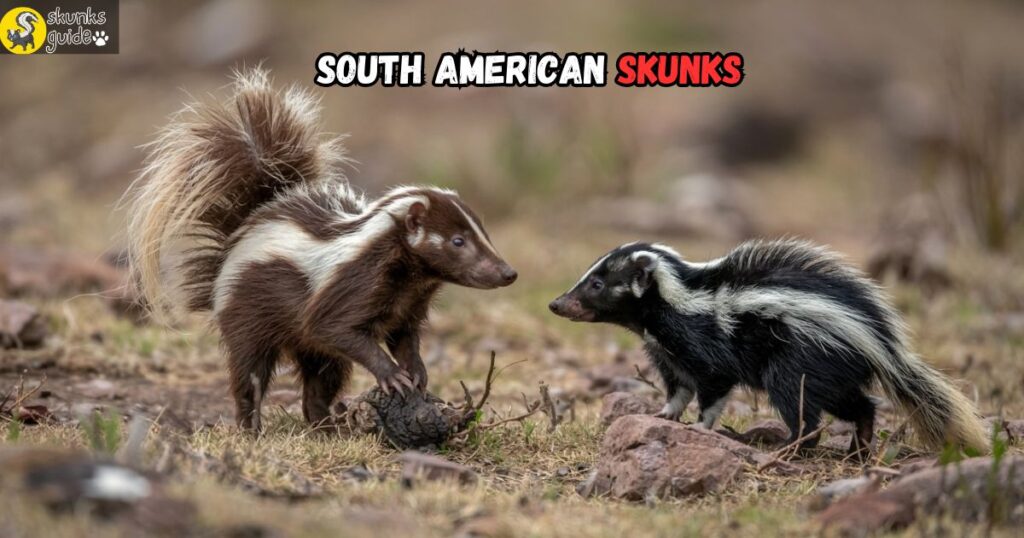
Yes—but only in northern and central South America. This is part of their native range.
Skunks in South America tend to be less striped and more spotted or hooded. Notable species include:
- Humboldt’s hog-nosed skunk (Conepatus humboldtii)
- Striped hog-nosed skunk (Conepatus semistriatus)
These species live in places like:
- Northern Argentina
- Colombia
- Peru
- Venezuela
- Brazil
They share similar diets and behaviors with their North American cousins, but often adapt to different climates and prey.
Are There Skunks in Africa?
No. Skunks are not found in Africa, either as native or introduced species.
However, Africa does have members of the mongoose and civet families that emit strong musky odors, leading some travelers or locals to confuse these animals with skunks. But biologically, they are not related.
European Skunk vs. American Skunk (Comparison Table)
| Feature | American Skunk (Mephitis spp.) | European “Skunk” (Polecat) |
|---|---|---|
| Native Range | North & South America | Europe, UK |
| Family | Mephitidae | Mustelidae |
| Spray Defense | Yes, powerful sulfur spray | Musky scent, not a true spray |
| Striped Appearance | Bold black-and-white | Often brown or dark with white patches |
| Nocturnal Behavior | Yes | Yes |
| Domesticated Presence | Yes, common as exotic pets | Rare as pets |
FAQs
Skunks themselves aren’t invasive in Europe or Asia. However, if kept as pets and released, they could potentially disrupt native ecosystems due to their foraging habits.
Skunks evolved exclusively in the Americas. Their ancestors adapted to temperate forests, grasslands, and desert ecosystems in the Western Hemisphere and haven’t spread naturally beyond it.
Yes, many zoos across Europe and Asia house skunks for education and conservation purposes, especially striped skunks.
Conclusion: Skunks—Local Icons, Not Global Natives
So, are there skunks in Europe, Asia, or the UK? The answer is no—but the story is more nuanced. While skunks are native only to the Americas, similar-looking or smelling species (like stink badgers or polecats) sometimes lead to mistaken identity.
If you live outside the Americas and think you saw a skunk, chances are it was either an escaped exotic pet or a lookalike species. As always, it’s best to admire wildlife from a safe distance, especially if it might have a potent spray!
Whether you’re a curious homeowner or a wildlife enthusiast, understanding skunk distribution helps us better appreciate these clever, misunderstood mammals—and avoid unnecessary stinky surprises.

